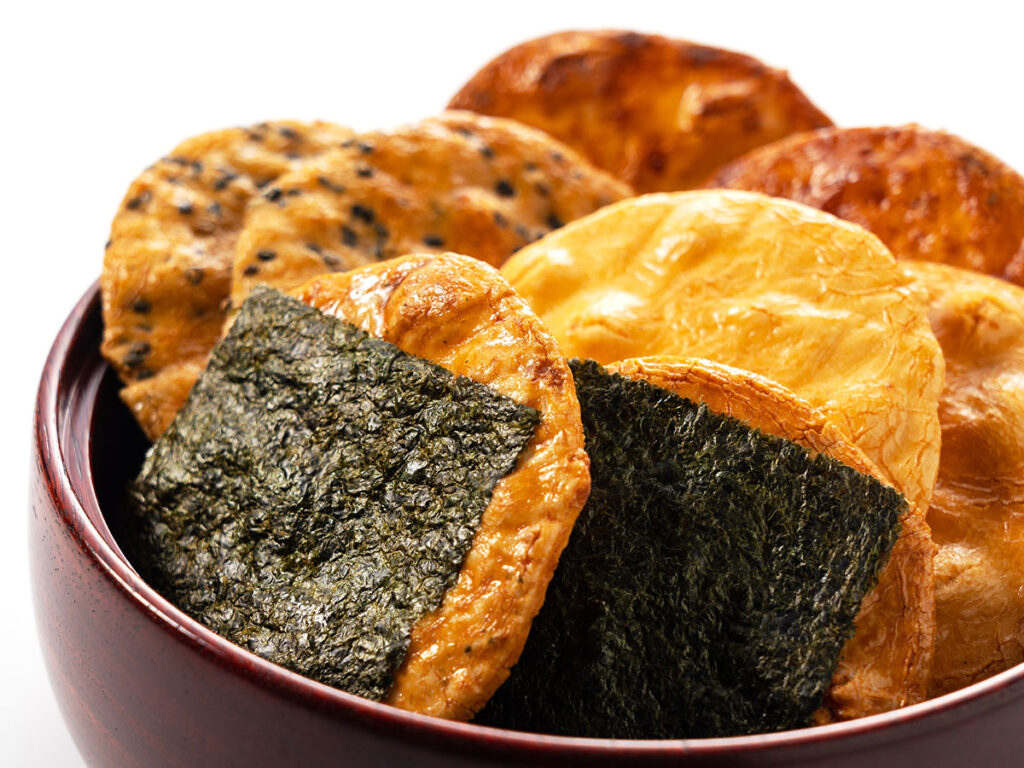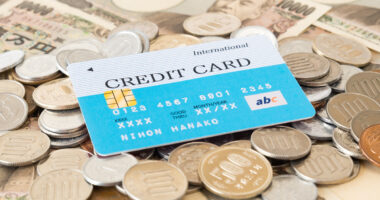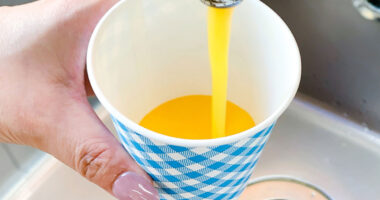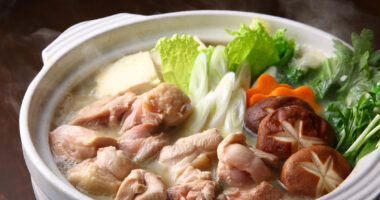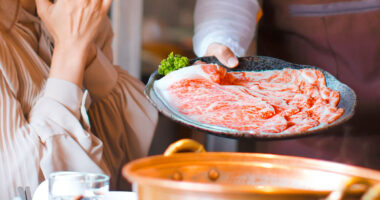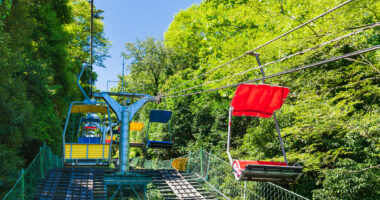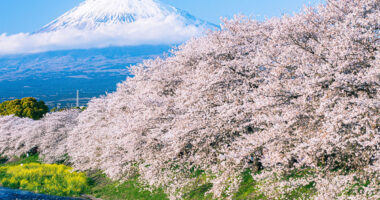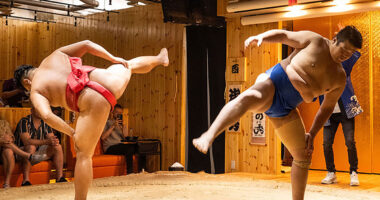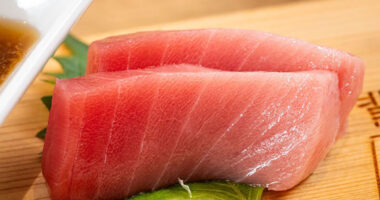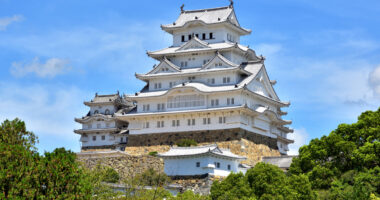Senbei (rice crackers) are iconic Japanese rice snacks, primarily made from uruchi-mai (non-glutinous Japanese rice) and shaped into thin, crisp treats.
It features a range of flavors, from savory soy sauce and salt to sweet varieties, with distinct regional characteristics. Made through baking or frying, senbei are a beloved national snack and popular tourist souvenir.
For a deeper dive into Japanese snacks, their popular genres, and souvenir tips, check out this article.
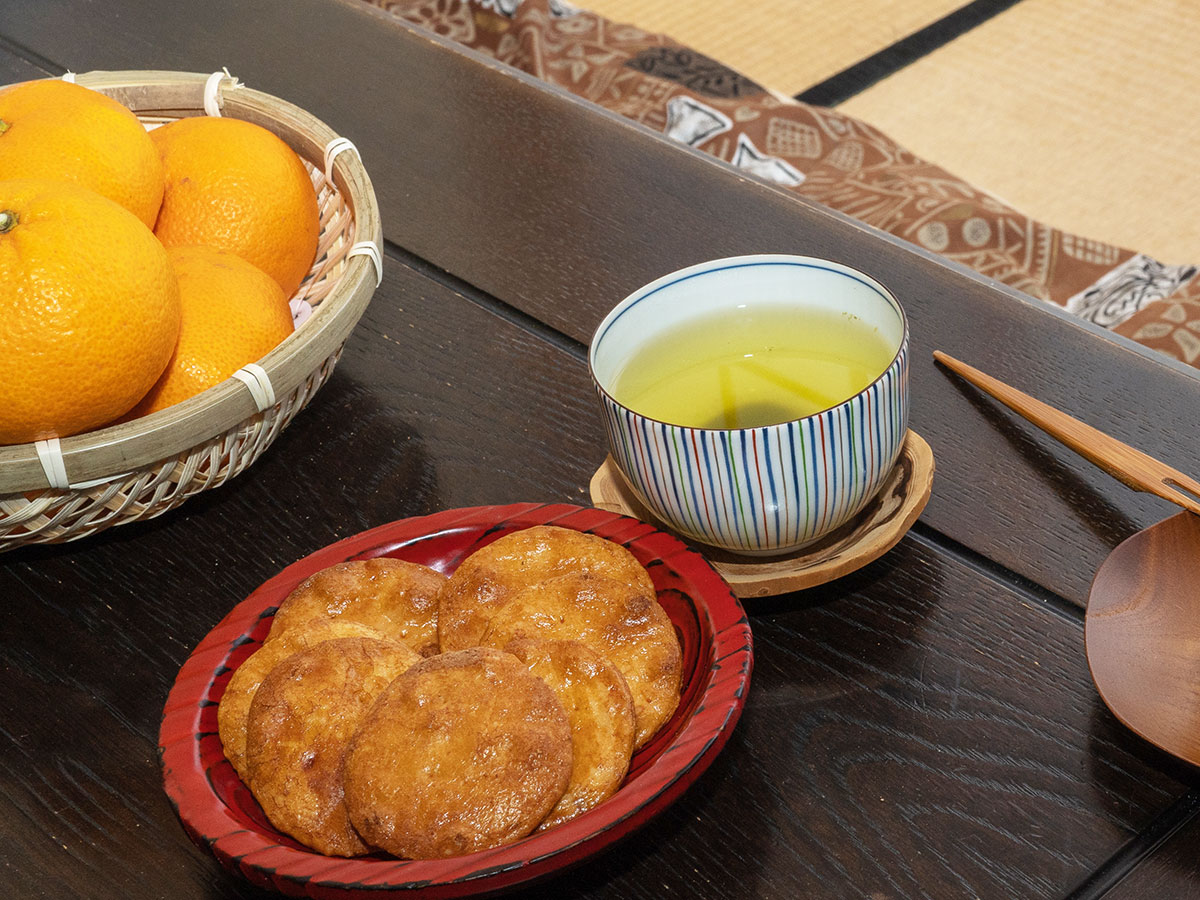
Senbei (photo for illustrative purposes)
What are senbei? Basic characteristics and definition
Senbei are traditional Japanese rice snacks, primarily made from non-glutinous uruchi-mai rice into thin, crisp crackers. Known for their hard, crunchy texture, they offer a satisfying bite. Available in round or square shapes, they come in flavors ranging from sweet to spicy.
Uruchi-mai as the core ingredient
Uruchi-mai, the same rice used in daily Japanese meals, is senbei’s primary ingredient.
Unlike okaki (large rice crackers) or arare (small rice crackers) made from glutinous mochi-mai (sticky rice), uruchi-mai’s low stickiness creates senbei’s distinct crispiness. This yields their signature crunchy texture.
From tea ceremonies to everyday snacks
Senbei are valued in tea ceremonies as complements to tea, deeply tied to Japanese tradition.
They’re also enjoyed at festivals or as daily snacks, loved by all ages. Today, their popularity as tourist souvenirs makes them a cherished taste of Japan for international visitors.
Senbei history and origins
Senbei’s history traces back to China, evolving uniquely in Japan over time.
Originally made with wheat flour and oil as thin crackers, they transformed with Japan’s rice culture, adopting rice flour as the main ingredient.
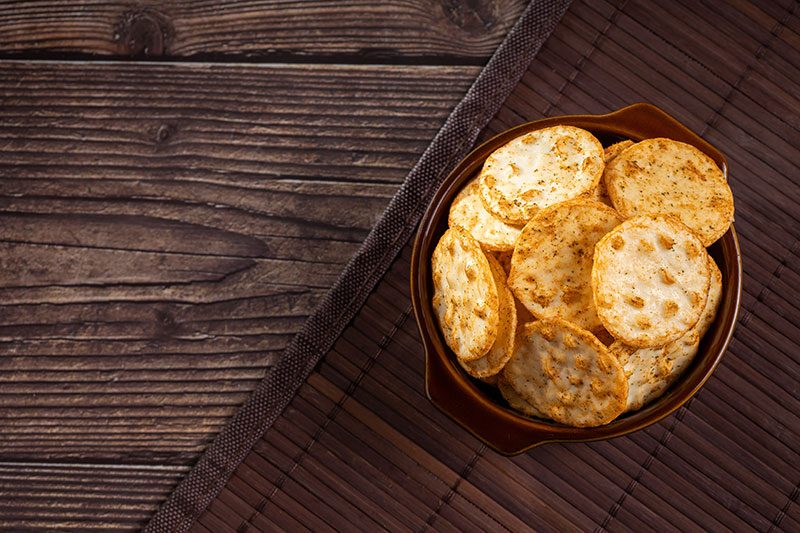
Senbei (photo for illustrative purposes)
Chinese origins and Japanese evolution
Early senbei, introduced from China, differed significantly from today’s versions.
Wheat-based crackers merged with Japan’s rice culture, evolving into the rice flour-based senbei we know today. This shift reflects Japan’s deep rice heritage.
From Edo period to modern times
By the Edo period, senbei became widely popular among commoners.
In Kanto, Sōka senbei (a hard, soy sauce-flavored senbei originating in Sōka, Saitama Prefecture) emerged as a specialty, with artisanal techniques perfected. Modern machinery enables mass production, allowing diverse senbei varieties nationwide.
Senbei types and flavor differences
Senbei come in numerous varieties, each with distinct flavors and traits. Common types include soy sauce, salt, and sweet flavors, with additions like nori or sesame. Baking or frying methods create varied textures and tastes.
Soy sauce senbei characteristics
Soy sauce senbei, the most common type, boast a savory aroma and are typically baked into round shapes. Their balanced salty-sweet soy sauce flavor pairs perfectly with tea. Soka senbei is a renowned example.
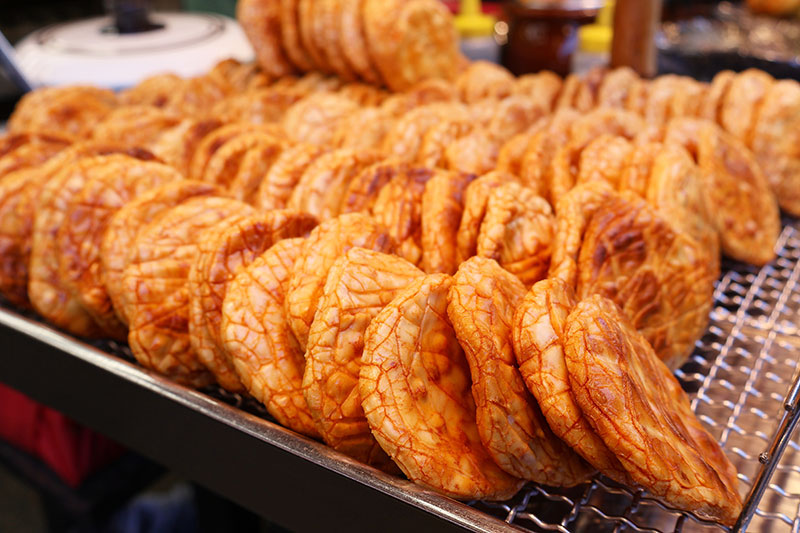
Senbei (photo for illustrative purposes)
Salt and sweet flavor variations
Salt-flavored senbei highlight the rice’s natural sweetness with a simple taste. Sweet varieties, like zarame senbei (sugar-coated senbei) or sweet-soy blends, offer a sweet-salty appeal. Sweet senbei are especially popular with children as snacks.
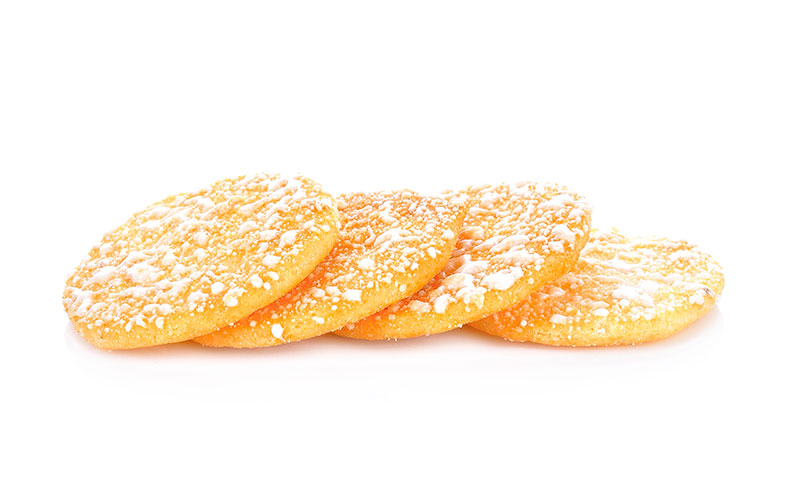
Senbei (photo for illustrative purposes)
Ingredient-rich senbei varieties
Goma senbei (sesame senbei) incorporate black or white sesame for nutty flavor and crunch. Nori-maki senbei (nori-wrapped senbei) offer a seaweed aroma with a hint of the sea, often in square or rectangular shapes. Seafood varieties like shrimp or squid senbei, and spicy chili senbei, add diversity.
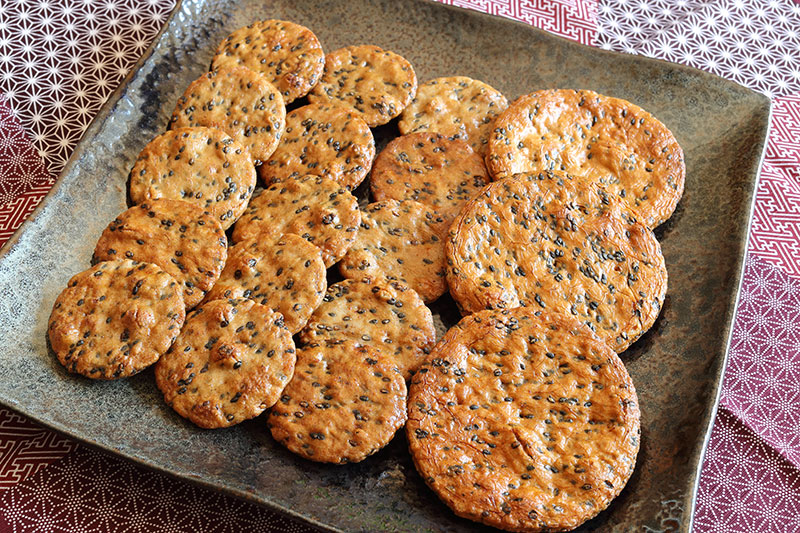
(photo for illustrative purposes)
| Type | Flavor Characteristics | Shape and Method |
|---|---|---|
| Soy sauce senbei | Savory soy sauce aroma | Mostly round, baked or grilled |
| Nori senbei | Seaweed-wrapped with a hint of the sea | Often square or rectangular |
| Goma senbei | Nutty sesame crunch | Mostly round |
| Chili senbei | Spicy kick | Small round shapes |
| Shrimp senbei | Seafood flavor with shrimp powder | Small round, fried |
Differences between senbei, okaki, and arare
Senbei, okaki, and arare are similar rice snacks but differ in ingredients and texture. Senbei use uruchi-mai, while okaki and arare use mochi-mai, creating distinct characteristics. Understanding these differences aids in better selection.
Texture differences by ingredient
Senbei, made from uruchi-mai, have a hard, crisp texture. Okaki, using mochi-mai, are crunchy outside but chewy inside. Arare, also mochi-mai-based, are small and crispy with a light bite.
Size and shape characteristics
Senbei are typically palm-sized, round or square. Okaki are slightly smaller, often irregularly shaped. Arare are the smallest, bite-sized, and come in various colors and shapes.
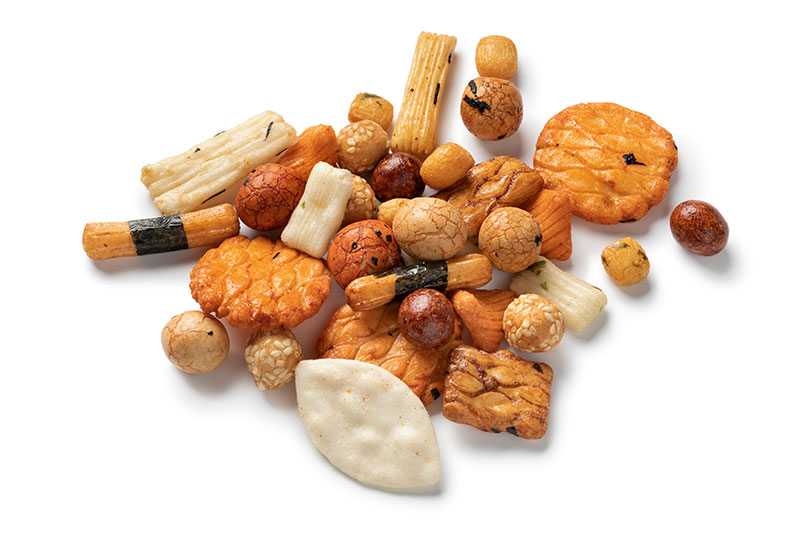
Okaki (photo for illustrative purposes)
Regional senbei specialties
Japan’s regions produce unique senbei tied to local food cultures, from Kanto’s Soka senbei to Hokkaidō’s curry senbei and Kyūshū’s mentaiko (spicy pollock roe-flavored) senbei. These regional specialties are popular souvenirs, offering a taste of local flavors.
Kanto’s iconic Soka senbei
Soka senbei from Saitama Prefecture is nationally renowned as a quintessential example of senbei. The artisanal techniques of handcrafting have been passed down, and some premium varieties exceed 1,000 yen per piece. In 2018, over 23,000 pieces were used to create a Mona Lisa mosaic, showcasing its cultural impact.
Hokkaido and Tohoku specialties
Hokkaido Prefecture’s curry-flavored senbei are a local delight. In Aomori Prefecture, Nambu senbei (round senbei made with wheat flour and baked in cast iron molds) offer simple, traditional flavors and are uniquely used in senbei-jiru (senbei soup). Tohoku Prefecture often incorporates senbei’s hard texture into culinary dishes.
Kansai, Chugoku, and Kyushu diversity
In Hyogo Prefecture and Kagawa Prefecture, kawara senbei (tile-shaped senbei) mimic traditional roof tiles. Chiba’s nure senbei (wet senbei) have a soft, moist texture, diverging from typical crispness. Fukuoka’s mentaiko senbei feature the spicy pollock roe flavor of Kyushu’s iconic mentaiko.
Choosing senbei and considerations
Selecting senbei involves considering texture, thickness, flavor, and storage to match personal preferences for maximum enjoyment.
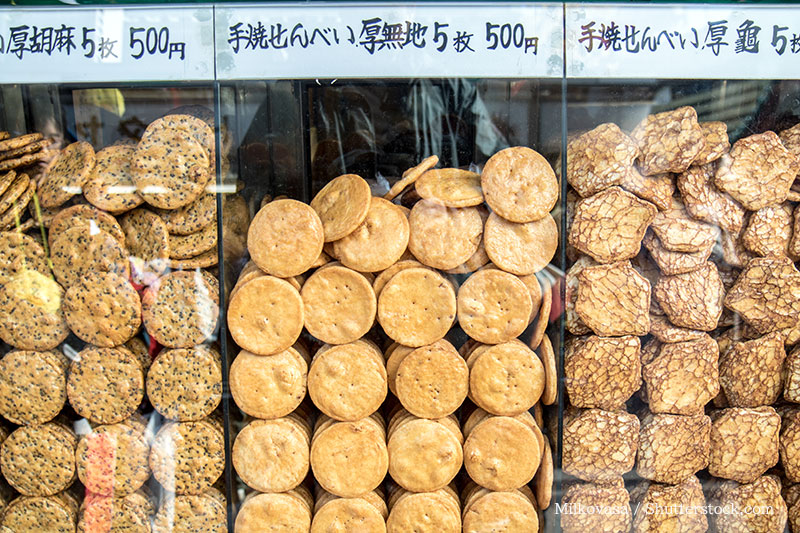
Senbei (photo for illustrative purposes)
Texture differences by hardness and thickness
Senbei’s hardness depends on preparation, with thinner ones offering a crisp bite and thicker ones providing hearty crunch. Choose hardness based on dental health or age, with softer options better for seniors or children.
Storage and shelf life
Senbei are moisture-sensitive, so store them in airtight containers away from sunlight to maintain crispness. Shelf life typically ranges from three to six months, varying by product.
Summary
Senbei, a cornerstone of Japanese rice snacks, boast a rich history and cultural significance. Made from uruchi-mai, they offer soy sauce, salt, or sweet flavors, with baked or fried methods creating diverse textures.
Understanding their differences, such as okaki and arare, and exploring regional varieties, deepens your appreciation of Japan’s food culture. Select senbei by hardness and thickness, and store them properly to fully enjoy their crispness.
